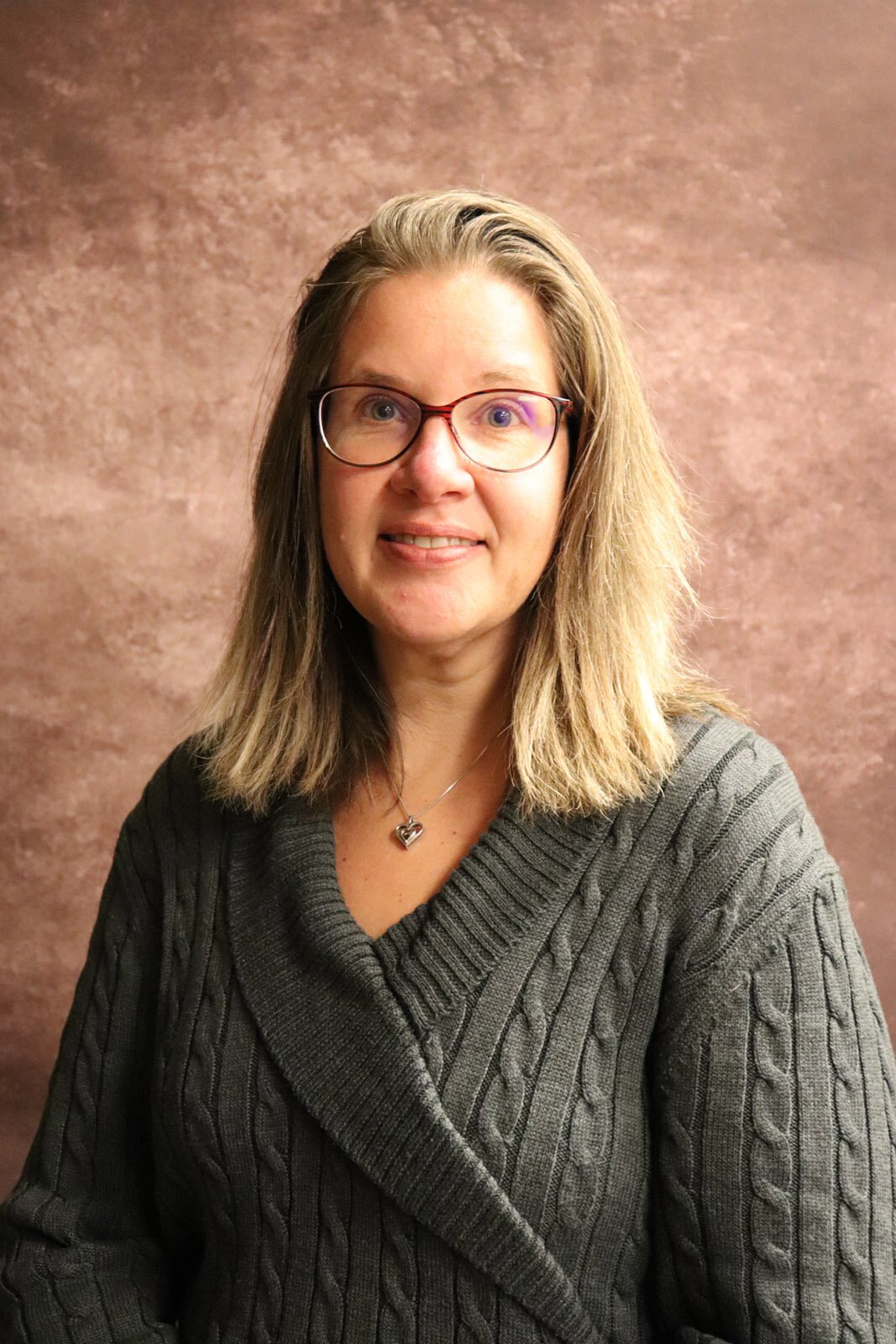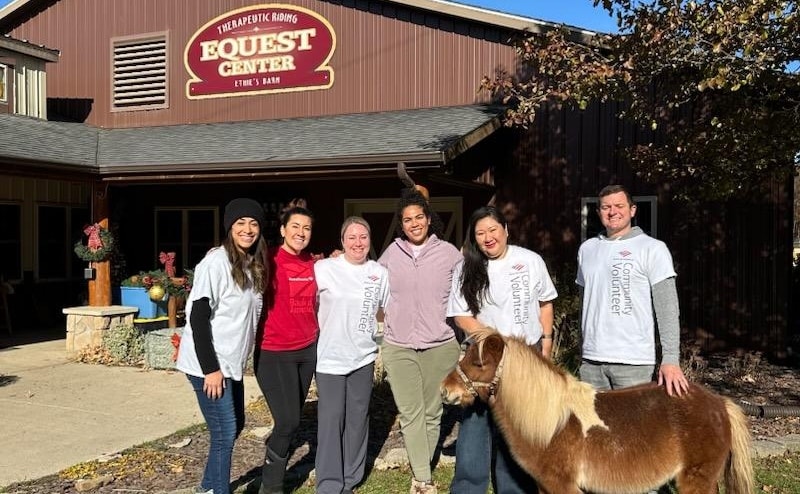
The Region IV Area Agency on Aging's Integrated Care at Home program aims to reach 100 community residents in 2023 and continue to grow that number in the years ahead.
This article is part of State of Health, a series about how Michigan communities are rising to address health challenges. It is made possible with funding from the Michigan Health Endowment Fund.
In all of her 75 years, Wanda Auer had never lived alone. That changed when her husband of 57 years went to live in a nursing home last summer. Auer had done her best to care for him after his 2019 dementia diagnosis but was no longer able to keep him safe and healthy at home.
“Ours is a true love story,” Auer told staff at the Region IV Area Agency on Aging, which serves Berrien, Cass, and Van Buren counties. “I met him when I was a teenager, and we’ve been connected at the hip since the first day we met.”
Region IV AAA’s new Integrated Care at Home program is helping that love story continue. Not only does Wanda receive in-home counseling to help her deal with the depression, grief, and sense of loss that living alone has brought her, but Region IV AAA also gives her rides to the nursing home so she can visit her husband.
The in-home counseling is helping Auer accept and adapt to the changes in her life without guilt. When Auer’s counselor asked Auer about her goals for a session, she replied, “To find out who Wanda Auer is again. I feel this may be my time to shine.”
Launched in late 2022 with funding from the Michigan Health Endowment Fund, Integrated Care at Home provides primary physical and behavioral health care and care management services to older adults in their homes. Region IV AAA staff hope to reach 100 community residents in 2023 and continue to grow that number in the years ahead.
“I just love this model. It brings together mental health, physical health, and social care support,” says Christine Vanlandingham, Region IV AAA CEO. “We don’t live in silos. It’s just the right model of care to bring that all together.”
It takes a village
By partnering with behavioral health providers, primary care providers, community-based organizations, rural federally qualified health centers, public health, consumers, caregivers, and more than 70 home- and community-based providers, Integrated Care at Home can address social determinants of health that impact clients’ lives: food, housing, transportation, utility bills, and more – even pest eradication.
“If you have a patient with a bedbug infestation, often they’re reluctant to have any providers come into their home, but they can’t get out of their homes,” Vanlandingham says. “As we identify needs and other barriers for participants, this vast network of organizations that we work with will meet those needs. The services are as individualized as the person’s needs.”
Integrated Care at Home also leverages Region IV AAA’s services, which include home-delivered meals, homemakers, and personal care aides as well as community-based services like adult day care, senior center programs, congregate meals, legal services, and elder abuse prevention. Region IV AAA’s community health workers help clients make all of these connections.
“We also have Medicare and Medicaid assistance counselors to help people choose the plan that best meets their needs and caregiver respite services, so that the individual can continue living at home with the support of a caregiver,” Vanlandingham says. “And we have friendly callers, volunteers who call on a weekly or more frequent basis just to provide some social connectivity.”
The Integrated Care at Home team also includes social workers, nurses, a registered dietitian, a nurse practitioner, and a medical director who collaboratively consider clients’ physical, mental, and social needs.
“The patient’s voice is primary,” Vanlandingham says. “We ask, ‘What’s important to the patient?’ Then we ask, ‘What are the barriers to achieving those goals?’ Then, as a team, we work across the disciplines collectively to help meet those goals.”
Replicating a successful model
Region IV AAA’s Integrated Care at Home program is modeled on the Primary Care at Home program developed by Senior Resources – the Region 14 Area Agency on Aging, which serves older adults in Muskegon, Oceana, and Ottawa counties.
“We are helping guide them in the steps and processes needed, [and] supporting them with policy and procedure process: how to do credentialing, contracting, billing, and work within different electronic medical records systems,” says Kim Vazquez, Senior Resources medical services administrator.

Primary Care at Home started in July 2020 and currently serves about 230 patients. Like Region IV AAA’s program, Primary Care at Home involves community health workers who monitor and support clients, a pharmacist to review medications, and in-home X-ray, ultrasound, blood draws, and testing for A1C, strep, and COVID.
“Because we’re able to visit them in the comfort of their home, we can do it more frequently and pick up on subtle changes as we manage chronic illnesses,” Vazquez says.
Since launching the program, Senior Solutions has seen a reduction in emergency room visits and hospitalizations among the people it serves. Vazquez notes that a good portion of Primary Care at Home participants would most likely forego medical and behavioral health care if the program were not available.
“So many of our patients just wouldn’t get care otherwise,” Vazquez says. “One of our larger referral sources are the other doctors’ offices where these individuals are just not coming in to be seen. We’re even helping the people that are termed non-compliant.”

The two Area Agencies on Aging also share a medical director. Dr. Michael Borgeld is on call 24/7 to supervise both agencies’ clinical teams and handle any issues that the nurse practitioners in the field cannot address themselves.
“We are so committed to person-centered care, meeting patients where they’re at, helping them meet their goals, and respecting their values,” Borgeld says. “I’m so lucky to have such amazing teams. Everyone shares in the desire to serve this population and serve them in their homes.”
No place like home
As studies have shown, older adults want to stay in their homes — and in-home care costs less than residential care in a nursing home. Programs like Integrated Care at Home and Primary Care at Home make it possible for Michigan’s older adults to receive the care they need, experience better mental and physical health, and live longer in the places they call home.
.jpg)
“It’s the right thing to do for people. It’s also the right policy choice,” says Michelle Barnes, Region IV AAA Integrated Care at Home manager. “Costs to provide care in a nursing facility are exponentially more expensive. We can do it for less than half of the cost. Then you layer on the quality of life. When we think about behavioral health care and mental wellbeing, to be able to live in a setting of your choice is an incredible mental health driver.”
Estelle Slootmaker is a working writer focusing on journalism, book editing, communications, poetry, and children’s books. You can contact her at Estelle.Slootmaker@gmail.com or www.constellations.biz.
Kim Vazquez and Dr. Michael Borgeld photos courtesy of Senior Resources. All other photos by Taylor Scamehorn.









